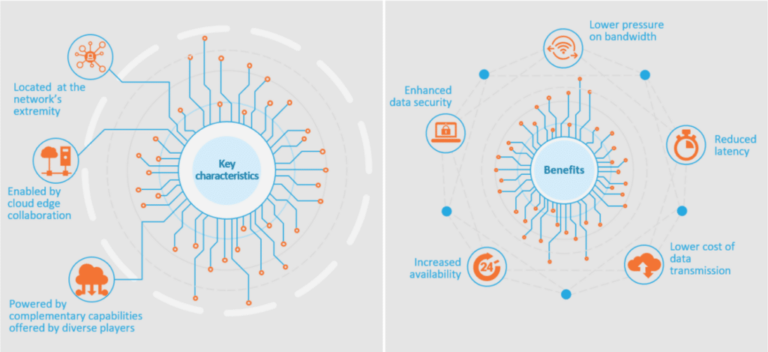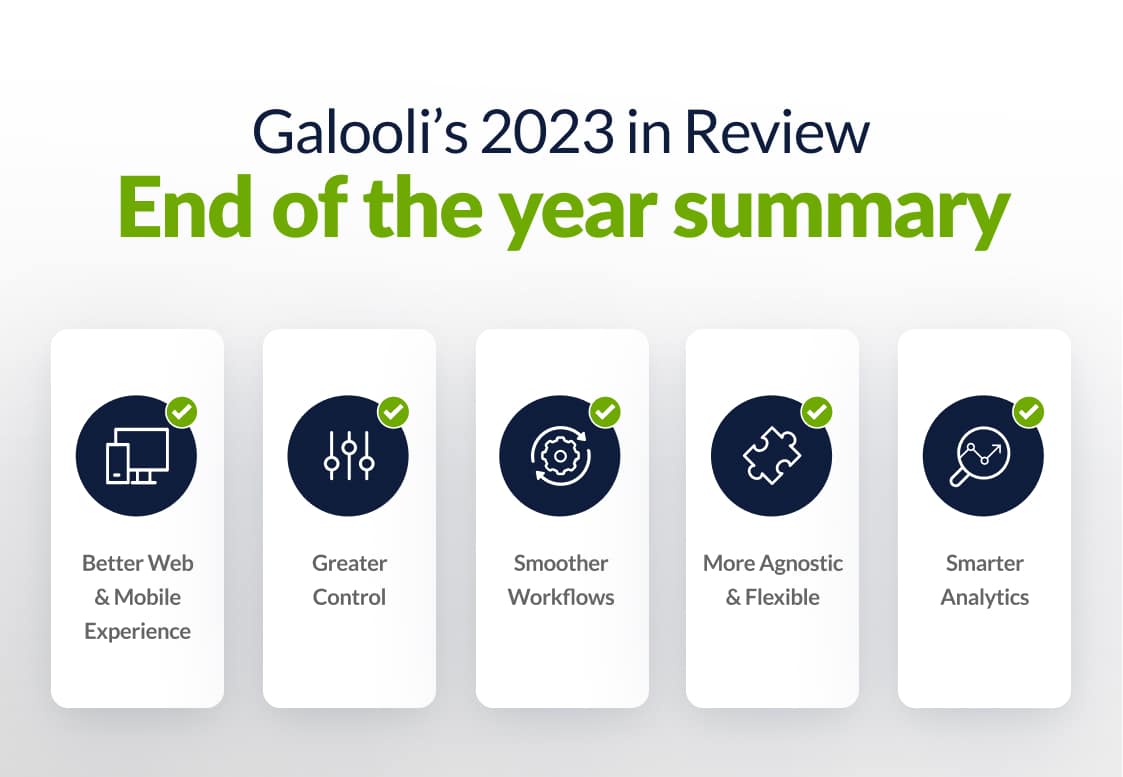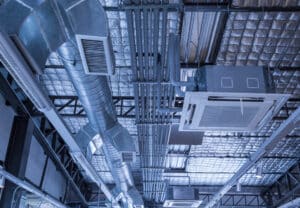
We’re living on the edge! No seriously, edge computing is the latest innovation in cloud computing, but it’s already all around us. From the Apple Watch on your wrist to the navigation system in your car, edge computing is revolutionizing daily and business life.
Edge computing is a model of computer operations that is physically at or near the site of a particular data source like IoT Devices or edge data centers. This minimizes the need for data to be processed at a centralized data hub and is an excellent solution for enterprises and businesses for efficient data processing.
Current systems are woefully ineffective and unable to keep up with the rapidly growing rivers of data, and these limitations can lead to disruptions if they are not mitigated.
To sum it up – edge computing is on-device, real-time data analytics. So how does edge computing differ from traditional computing models, and why is it so critical to long-term business success.
Why is Edge Computing important?

As cloud computing has become an integral part of business operations, a glaring challenge has remained – bandwidth costs are astronomical. This alone is a major driver for a number of organizations to begin implementing an edge computing strategy.
By installing edge data centers you cut down the need for that massive bandwidth as the data processing and analytics is performed at the edge sites, before being sent to the central hub. In addition, high bandwidth needs is coupled with exponentially greater energy usage, and fast-growing carbon emissions.
The nature of edge computing causes to support and augment sustainable energy management. These systems can provide real-time assessments of energy usage and note any irregularities, as well as maximize energy efficiency of energy sources like wind and solar.
Managing Data on the Edge

So how is edge computing managed and developed? With edge data centers of course. These facilities deliver cloud resource and provide localized data storage and analytics, saving on processing and network bandwidth costs. This also improves the customer experience, as they have readier and more seamless access to their information and applications they rely on.
These edge data centers can take the form of small-form factor container-based centers that are intended to support 5G service towers, to one room data centers on-campus. This smaller footprint also leads to significant energy savings and efficiency if implemented and monitored correctly.
Edge data centers are focused on processing and providing time-sensitive information with as little delay as possible. Unlike a traditional data center which might have a single server placed remotely, edge data centers are comprised of several or many servers running in tandem in this minimized space.
How to monitor and manage your growing edge network
Just like data centers need to actively monitor their operations, effective edge computing depends upon actively and remotely monitoring these assets. This is especially true in terms of monitoring and managing their energy and HVAC use, and creating full visibility of your growing edge infrastructure.
These RMM tools also provide live alerts relating to any performance issues, potential theft, or maintenance needs of machinery on-site. This provides your organization with on overarching view of your edge network, and proactive control of those remote assets at all times.
Before we go any further, we should take a quick look at the differences between edge and cloud computing.
Edge Computing vs. Cloud Computing – A tale of two models
One of the most important things to remember about edge computing is that it is not a replacement for cloud computing. Differentiating between them is similar to comparing a tablet to a desktop computer. They both have certain functionalities and expectations regarding their use.
The differences between edge and cloud computing start at which companies are relevant to which computing model.
Edge computing is perfect for those organizations with latency as one of the highest priority concerns, like many medium-sized enterprises with budget constraints. Cloud computing on the other hand is well-suited to organizations and projects which require storing massive quantities of data.
When it comes to securing this infrastructure, cloud computing definitely has the edge in that it requires a less robust security strategy. On the other hand, edge computing often requires complex authentication methods and proactive attack mitigation at each remote site.
Finally, in terms of programming the technology, edge computing can be troubleshooted and looked at via a variety of platforms, each with its own unique runtimes. For cloud solutions, a sole programming language is relied on more or less for each cloud platform, and most of the programming is done in the cloud.
Now that we’ve established the differences between the computing models, we can now look at how edge computing is being implemented today.
Use cases for Edge Computing
Edge computing is relevant far beyond just simple data collection for B2B enterprises. There are a number of examples of edge computing beyond what you might think of, and some you already did. Here is our list of some of the most relevant use cases for edge data centers today.
Smart Cities / Buildings
As buildings, cities, conference centers and places of gathering grow increasingly cloud-optimized, those massive quantities of data will have to be hosted on-site to some degree. This will allow for a much more immersive and intelligent experience for inhabitants and visitors, as well as increase stability, safety, and operating efficiency. Things like power and network outages will be a thing of the past.
As urban areas become mass gathering points for data collection, effectively and fluidly analyzing and storing that data is becoming increasingly labor and network intensive. Having edge data centers at these higher-volume data “pools” will provide public works and emergency services with even more efficient operations and control over surrounding environments. It will also revolutionize how inhabitants carry out day-to-day tasks, as well as the overall design of the urban sprawl.
Autonomous Vehicles
Countless billions of dollars have been thrown into making driverless vehicles along with other improvements through edge computing solutions in the automotive industry. These vehicles will need to gather and process massive quantities of data in real-time to remain safe and effective, such as weather, road conditions, and potential hazards. For that reason, keeping this data stored or accessible as close as possible to major avenues of travel will make these operations significantly more streamlined and efficient.
Healthcare
Healthcare is frequently found to lag behind in adopting current technological advances, let alone experiment with upcoming innovations. However, edge computing offers a world of new opportunities for healthcare operators. Having instant access to live patient data, being able to extrapolate complex problems and develop models for surgeries, all of these things can be made possible and improved upon by edge computing.
This is not only relevant for major healthcare centers, but especially for rural, or remote areas who do not have access to these services in more densely-populated areas. Edge data centers can provide those doctors with a patient’s data instantaneously regardless of their location or its origin.
Industry 4.0
Manufacturing is going through a revolution, with hundreds if not thousands of pieces of equipment able to be “smart” and generate performance metrics data. Edge computing will be invaluable in these cases, in order to greatly improve visibility, provide predictive maintenance alerts, and minimize downtime.
Streaming Services
Video streaming constitutes over 80% of global internet traffic, and with the spread of 5G and fiber-optic networks, along with remote business operations, that number will continue to grow. From Netflix to multinational conference calls and innovative cloud-centralized gaming, edge computing brings a wealth of capabilities and improved operations for various streaming services.
Localizing the data needed to access these information and media streams will offer a much more fluid experience for customers and reduce network load and bandwidth costs for providers. A recent study found that a wide deployment of edge data solutions in these instances could save 2-5% of the global electricity consumption by 2030.


























